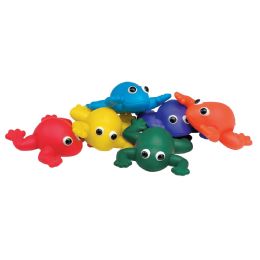














Why are Sensory and Motor Skills so Important?
Children who have brain imbalances, or who experience learning or behavioral issues will also tend toward a poorly coordinated motor system. Clumsiness, incoordination and an awkward gait are all common attributes of an undeveloped motor system. Healthy motor activity consists of a number of various skills which include rhythm and timing, muscle tone and strength, gross and fine-motor skills, eye-muscle balance and coordination, primitive and postural reflexes, bilateral coordination, sensory detection and vestibular balance and posture.
Sensory deficits and imbalances have also been scientifically shown to link to atypical behaviors in children. Because all of the senses, such as vision, hearing, touch, smell, taste and balance, are dependent and interlinked with other sensory functions, no one sensory function works alone. Vestibular balance and spatial perception are both affected by sensory input, as is proprioception, an ability to know where one's own body is in space. Both children and adults learn best when they fully engage their senses, retaining the most information.
How Will Sensory Motor and Perceptual Activities Toys Help My Child?
Toys and devices that have been specifically designed to facilitate sensory motor and perceptual activity give children with developmental disorders a wonderful opportunity to explore these materials without any preconceived knowledge. They learn valuable brain skills through the act of play, discovering the world around themselves through the development of their senses. Cognitive skills such as decision making and problem solving are enhanced, while linguistic capabilities soar because a child starts learning the true meaning of a word through the use of sensory play to encourage descriptive and expressive language.
Sensory play additionally teaches children healthier social and emotional connections, making sense of concepts such as collaboration and cooperation. Creativity is enhanced with these special toys that focus more on the process rather than the end result, which also fosters healthier self-esteem. Physical skills are also accelerated through the use of sensory motor and perceptual activity toys. Small muscle movements, such as eye-hand coordination, involve fine motor skills, while larger muscle movements such as walking or running use gross motor skills. Both skillsets can find improvement through the use of specific developmental toys for these muscle activities.
Some Sensory Motor and Perceptual Activity Suggestions.
Here are just a few ideas to help you decide what sensory motor and perceptual activity toys would be best for your child. Don't forget to talk to your child's doctor and professional care team about ideas that can help your child's development, too.
For perceptual training, hand-eye coordination, color identification, reaching and grasping and better upper extremity development: Economy Stacking Cones, Skil-Care Tic-Tac-Toe Gel Pads
For enhancing fine motor coordination and finger dexterity:
Skil-Care Activity Aprons, 9 Hole Pegboard
For proper communication, expression, auditory attention and the improvement of motor skills:
Music Therapy Kit
For tactile stimulation:
Skil-Care Gel-Top Sensory Stimulation Tray, Skil-Care Gel Shapes
For both sensory relaxation and stimulation:
Skil-Care Sensory Pillows, Skil-Care Vibrator Mitts
Hulet Smith, OT
Rehabmart Co-Founder & CEO
ck